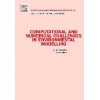- Out-of-Stock



No product available!
No product available!
No product available!
AVT kit for self-assembly LED Dimmer - LED lighting controller. AVT1800 B
No product available!
16 Mpx camera module with IMX298 sensor compatible with all versions of Raspberry Pi. The maximum video resolution is 4672×3496 pixels. ArduCAM B0174
No product available!
USB TO UART solution with USB micro connector. Waveshare 11315
No product available!
TEMPERATURE CONTROLLER - THERMOSTAT FOR EVERYONE - A KIT FOR INDEPENDENT INSTALLATION
No product available!
No product available!
No product available!
Particle Photon is an IoT module with an ARM microcontroller (Cortex-M3) and a WiFi module
No product available!
No product available!
No product available!
Grapic LCD 128x64, NEGATIVE BLUE, LED backlight (white), enhanced temperature range, PCB 77.8x69.8mm, RoHS
No product available!
LinkItTM Smart 7688 Duo (a compact controller board) is an open development board based on MT7688 and ATmega32u4. The board is compatible with Arduino Yun sketches and is based on the OpenWrt Linux distribution. Seeed Studio 102110017
No product available!
No product available!
No product available!

